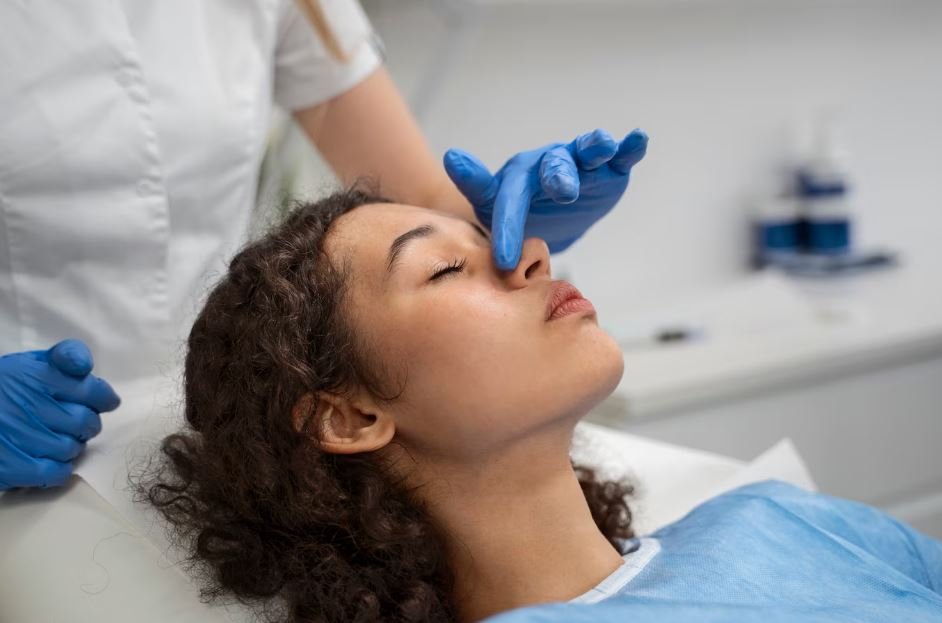
For people with persistent sinus issues, functional endoscopic sinus surgery has emerged as a remarkably successful treatment option during the last ten years. Without making any external incisions, FESS gently restores airflow by removing blockages deep inside the sinus cavities, much like a fiber-optic snake would unclog a clogged drain. This method, which has been honed over decades of surgical development, has fundamentally changed how ENT specialists treat chronic nasal symptoms that don’t go away with medicine.
Surgeons enter through the nostrils and view the sinuses in real time using a thin, high-resolution endoscope. In order to remove impediments such as inflammatory tissue, polyps, or bone fragments, they use instruments that are small enough to fit through these natural channels and navigate with precise accuracy. With a quicker recovery and noticeably less discomfort after the procedure, this precision-driven approach has drastically decreased the need for open sinus surgery.
Key Details about Functional Endoscopic Sinus Surgery (FESS)
| Category | Description |
|---|---|
| Surgery Name | Functional Endoscopic Sinus Surgery (FESS) |
| Surgical Approach | Minimally invasive, endoscope-guided, no external incisions |
| Main Purpose | Restore sinus drainage, treat chronic sinusitis and nasal polyps |
| Common Conditions Treated | Recurrent sinus infections, nasal congestion, loss of smell |
| Tools Used | Nasal endoscope, micro-instruments |
| Average Recovery Time | 1–2 weeks for daily tasks, full recovery up to 2 months |
| Success Rate | 80–90% improvement in symptoms with proper aftercare |
| Typical Risks | Minor bleeding, nasal congestion, rarely cerebrospinal fluid leaks |
| Hospital Stay | Often outpatient, occasionally overnight |
FESS proved to be an extremely adaptable solution for patients like Jenna R., a voice-over artist whose livelihood depends on vocal resonance and clear breathing. She referred to the change as “waking up to a new airway”—a sentiment shared by innumerable people whose lives had been negatively impacted for years. The procedure offers a quick route back to performance, especially for professionals, athletes, or creatives who depend heavily on peak respiratory function.
Following the failure of conservative treatments like steroid sprays, antibiotics, or saline rinses to produce lasting relief, clinicians frequently suggest FESS. In those cases, surgery is not only reasonable but also becoming more and more necessary, particularly when imaging shows persistent blockages or polyps. Surgeons can restore natural drainage and increase the efficacy of upcoming medical treatments by carefully focusing on particular areas of obstruction.
FESS can also be a game-changer for parents. Surgery frequently results in significant improvements for kids with persistent sinus infections that interfere with their ability to sleep, learn, or eat. The procedure is frequently combined with other procedures, such as tonsillectomy or adenoid removal, in pediatric cases. Children usually recover quickly; they can go back to school in a week and start breathing more easily in a few days.
Many patients put off non-urgent ENT procedures during the pandemic, which led to prolonged suffering and decreased productivity. FESS bookings have noticeably increased since healthcare systems are once again running at full capacity. Endoscopic sinus surgery is in greater demand, according to providers in both the public and private sectors. This is a positive indication that people are beginning to trust elective care as a means of achieving long-term health.
Not only is FESS a highly innovative procedure, but it also revolutionizes post-operative care. Patients frequently discover that nasal sprays and rinses function noticeably better after the sinuses have been cleared and anatomical pathways have been restored. It has been demonstrated that improved medication delivery following surgery prolongs symptom relief and lowers the recurrence of problems like polyps. When chronic inflammation becomes intolerable, many ENT professionals now consider FESS as a first-tier option because of its dual impact—mechanical correction combined with pharmaceutical efficacy.
Of course, there are risks associated with any surgery. Although they are common, mild nosebleeds, transient odor loss, and nasal stuffiness typically go away in a few days. Less than 0.5% of cases result in more severe complications like vision problems or leaks of cerebrospinal fluid. FESS has established itself as a dependable and patient-friendly procedure for patients of all ages due to its overwhelmingly high safety profile.
Surgeons stress how crucial it is to follow post-operative care guidelines. For at least two weeks, patients are advised to refrain from heavy lifting, blowing their noses, and engaging in strenuous physical activity. It is crucial to use saline rinses several times a day in order to remove crusting and encourage healing. An exceptionally clear recovery path is facilitated by keeping the head up while sleeping, taking prescription drugs as directed, and keeping follow-up appointments.
It’s interesting to note that new research has looked into the advantages of combining FESS with specific drug delivery methods. It has been demonstrated that modified nasal spray nozzles made especially for post-surgical anatomy can deliver medication deep into the ethmoid sinuses. For patients with persistent inflammation or autoimmune-related nasal problems, this approach is showing great promise.
FESS represents a larger movement toward precision medicine in an increasingly personalized healthcare environment. ENT teams are customizing the surgical plan according to each patient’s anatomy, infection history, and lifestyle rather than depending on one-size-fits-all protocols. In addition to raising success rates, this attention to detail has greatly raised patient satisfaction.
The advantages of FESS for society go beyond just alleviating symptoms. People with chronic sinuses frequently experience exhaustion, restless nights, and absenteeism. FESS improves mental focus, sleep hygiene, and mood by restoring nasal function, so it’s more than just a surgical solution. This wider benefit has begun to be acknowledged by employers and insurance companies, many of whom now promote earlier referrals to specialists.
It’s important to remember that FESS is not an irreversible leap for people who are still apprehensive about surgery. Decades of clinical evidence have backed this strategic intervention, which has been enhanced by continuous innovation. It has the ability to transform everyday hardships into a faraway memory with the right timing, planning, and attention.
